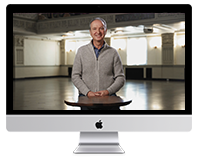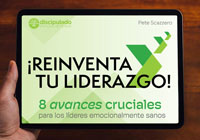What is the churches’ task in the world? What does it look like to bring Jesus Christ to a community? A city? I received a glimpse of that through what turned out to be my favorite book of the year — Katherine Boo’s Behind the Beautiful Forevers: Life, Death and Hope in a Mumbai Undercity.
She reports on three years of her life lived in Annawadi, a slum 200 yards from Mumbai’s Airport in India. 3000 people from different castes, cultures, regions of India, and religions live there. Most go through rich people’s garbage to make a living. It is a true “undercity” as most do not have the language skills, education, social connections or caste privileges to find stable work in the “overcity” of Mumbai. By focusing on this relatively “undercity,” Boo provides a brilliant look at the complexities of poverty in global cities by examining just one small enclave. New York too has an “overcity” and an “undercity.” I have spent the last thirty years of my life attempting to connect the “overcity” of Manhattan to the “undercity” in Queens in our establishing of New Life Fellowship Church and our NL Community Development Corporation. We have had more than our share of failures. I was very naïve about how intractable systemic poverty and racial/class division really is over these decades. At the same time, I have seen wonders and the beauty of God in ways I could never have imagined. Behind the Beautiful Forevers focuses on Abdul, a Muslim 16 year old and the oldest of nine children. He works day and night with garbage, trying to support his large family. His dream is that his 14-year-old brother might go to school and get a job as a waiter at one of the airport’s rich hotels. When the global recession of 2008 rocks the city, the price of garbage goes way down. Suppressed tensions and prejudices over religion, caste, gender, power and economic envy surface with a fury. Abdul’s family is doing okay financially because he is so good at sorting garbage. But next door lives Fatima, whom everyone calls the One Leg. She grows jealous of her neighbors’ “prosperity” and burns herself in her hut so she can blame Abdul’s family and have them arrested. Her plan succeeds and they are left to languish in jail. The anti-poverty programs that come in from non-profits and the Indian government fail. Sister Paulette, who runs the Catholic orphanage, routinely sells expired food donated by airline-catering companies to poor people in Annawadi, who in turn try to resell it in order to gain a small profit. Water? There are six public water faucets, but a gang has appropriated them and charges usage fees. An education? The free school near the airport stops at the eighth grade, and the teachers are often absent anyway. If you want to attend the ninth grade, you have to pay for a private school. Few have the money. A new heart valve? The public hospitals are supposed to perform these kinds of operations for very little money, but the heart surgeon at Sion Hospital thinks it’s worth 60,000 rupees. If you want a bank loan, you have to pay for the privilege of having your application seen by someone. Court witnesses and police officers also demand money if you want a verdict of innocence. Having spent now almost thirty years here in Queens, I found myself nodding “yes” throughout the book. I don’t think I am jaded or cynical, but I agree with her about the great divide between the two “cities” within the city. She observed a few key learnings that I think are important for us as the church as we engage the world’s poor in the name of Jesus (whether it is here in Elmhurst, NYC, or in Mumbai):
- We human beings are very much alike, all over the world, regardless of our social status, race, or nationality. Each individual is a miracle made in God’s image.
- True change is one life at a time. It is very slow and from the bottom up, not the top down. You have to move into the neighborhood, i.e. incarnate like Jesus and leave your world, and offer your life like Jesus. To begin to impact a community takes decades.
- The people able to raise money for the “undercity” rarely live there or are engaged with its people. Yet they usually have the marketing money, education, and power to get their message to the “overcity.” I remain unsure of how to bridge the great divide.
- Jesus Christ and His church is the hope of world. Leading our people to a profound, transforming spirituality is the future, that our people might choose the way of descent with Jesus and move to the “undercities” of our day in His name.
What thoughts might you add?







